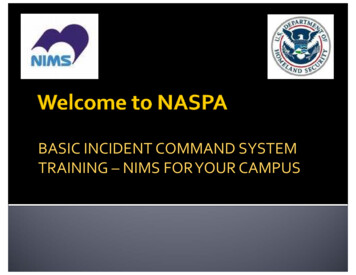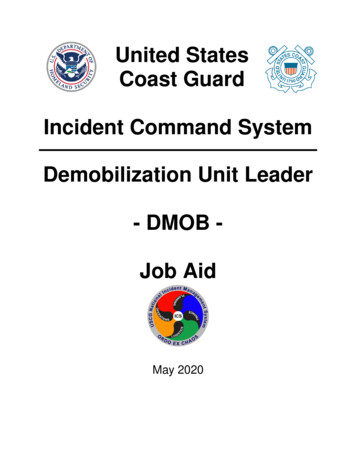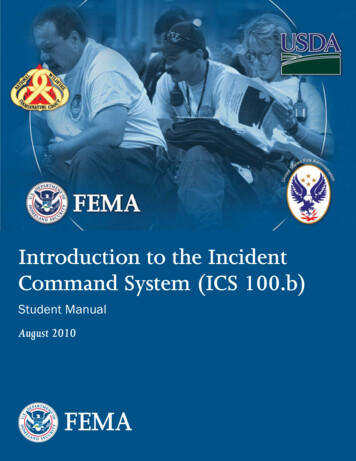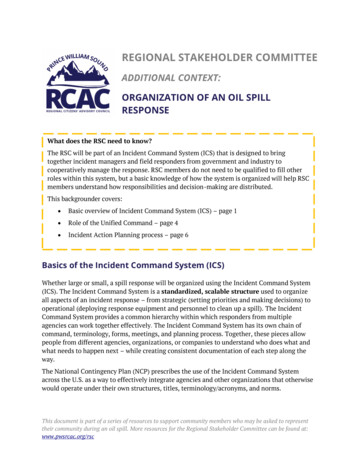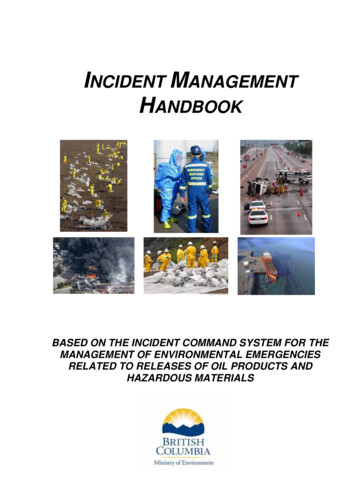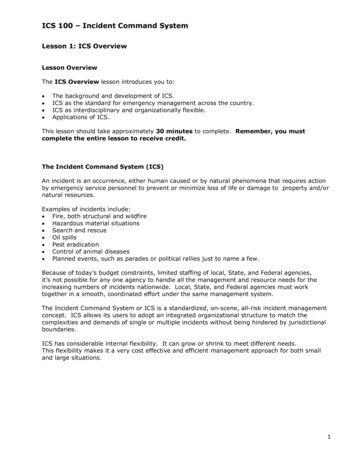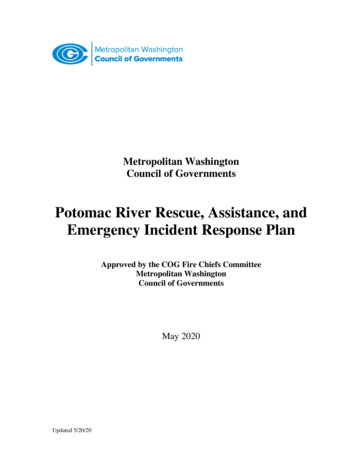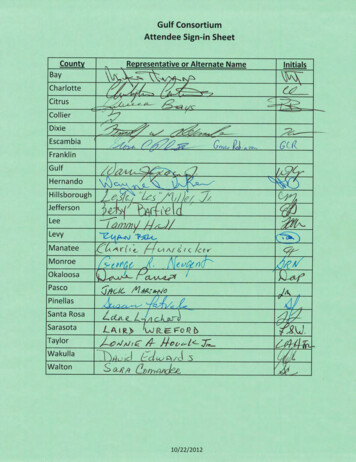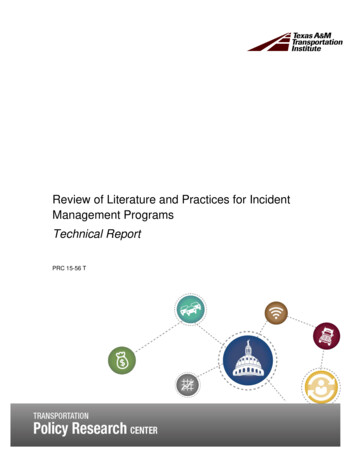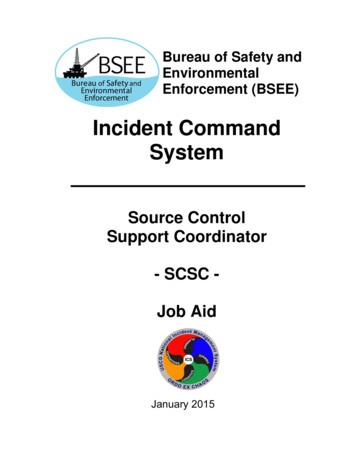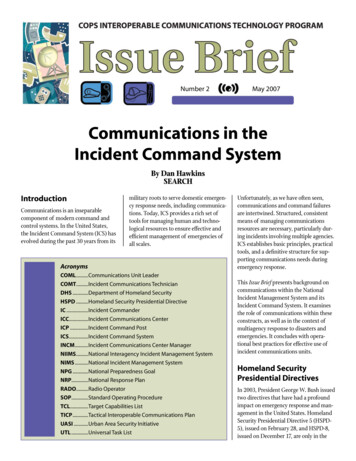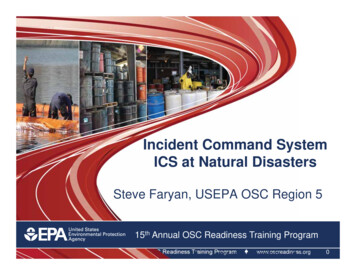
Transcription
Incident Command SystemICS at Natural DisastersSteve Faryan, USEPA OSC Region 515th Annual OSC Readiness Training Program 15th Annual OSC Readiness TrainingProgram www.oscreadiness.org www.oscreadiness.org 0
USEPA’s Incident ManagementHandbookCHAPTER 20NATURAL DISASTERSEPA’s response to a natural disaster is, at its core, ahazardous substances response. As such it should beresponded to under the National Response System (NRS),using the guidance provided in Chapter 15 - HazardousSubstances. In the context of a response to a naturaldisaster, however, EPA’s activities will likely be conductedunder Emergency Support Function #10-Oil andHazardous Materials Response Annex (ESF #10) of theNational Response Plan (NRP). OSCs are encouraged tofamiliarize themselves with ESF #10 and the NRP as awhole. 15th Annual OSC Readiness Training Program www.oscreadiness.org1
Incident Management Review and use Incident Command Systemand Structure from past Responses Flexibility to expand and contract Establish IMT while in pre-deploymentstages Support and Logistics for IMT andresponders: mobilization, command posts,lodging, Health and Safety Plan, START andERSS Contractors, Liaison with State and Local EmergencyManagement Liaison with FEMA and other FederalPartners 15th Annual OSC Readiness Training Program www.oscreadiness.org2
Incident Management Structure Examples of Organizational Structures inIncident Management Handbook Examples on epaosc.org (Hurricane IreneTropical Storm Lee Region 2, TennesseeFloods Region 4 IAP’s posted on readiness site fromTennessee Floods, Hurricane Irene TropicalStorm Lee 15th Annual OSC Readiness Training Program www.oscreadiness.org3
ICS Structure Consider use of Response Support Corps forPotable Water, Waste Water, GIS Supportand Liaison Positions Command and General Staff can operate outof Regional EOC Operations Staff in the field and mobile Position Liaison Officer with FEMA and Stateand Local agencies 15th Annual OSC Readiness Training Program www.oscreadiness.org5
Development of Incident Action Plan Develop Health and Safety Plan, SafetyMessages and use of Standard OperatingPractices Establish communications plan with back upradio or satellite communications Use of aerial assessment to cover largeareas, Helicopters, Fixed Wing (Aspect),Satellite Photos Develop Targets: Mapping of areas ofconcern with GIS locations prior to mobilizingcontractors 15th Annual OSC Readiness Training Program www.oscreadiness.org6
OperationsAssessment Branch
Assessment Branch 15th Annual OSC Readiness Training Program www.oscreadiness.org9
Abandoned Container Recovery Group
Tank Recovery Group 15th Annual OSC Readiness Training Program www.oscreadiness.org11
Disposal Branch Debris Collection Teams Household Hazardous Waste Team Sampling and Characterization Transportation and Disposal 15th Annual OSC Readiness Training Program www.oscreadiness.org12
River Assessment Team 15th Annual OSC Readiness Training Program www.oscreadiness.org13
ICS at Natural Disasters Summary Review ICS Structure from past responsesand EPA Incident Management Handbook Assemble Incident Management Team at theoffice prior to mobilization Prepare HASP, IAP, Communication Planetc. prior to mobilization Liaison is a key position 15th Annual OSC Readiness Training Program www.oscreadiness.org14
ICS at Natural Disasters (cont.) Complete Air and Ground Assessment Priorto mobilizing Recovery crews Prepare Detailed Maps with targets to guideRecovery Crews Wait to initiate Water Recovery Operationsuntil flood waters recede 15th Annual OSC Readiness Training Program www.oscreadiness.org15
USEPA's Incident Management Handbook CHAPTER 20 NATURAL DISASTERS EPA's response to a natural disaster is, at its core, a hazardous substances response. As such it should be responded to under the National Response System (NRS), using the guidance provided in Chapter 15 - Hazardous Substances. In the context of a response to a natural
